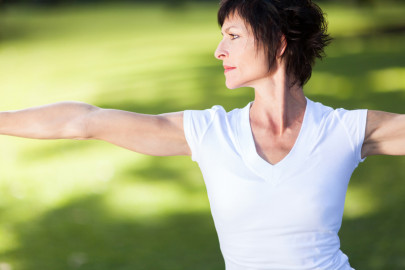Blog

Everything Women Should Know About Osteoporosis
As women age, it’s important for them to remain vigilant and responsive to the natural changes their bodies experience, such as the slow-down of bone cell replacement. Typically, the body is constantly breaking down and replacing bone tissue; however, by our 30s, this process begins to decline and our bodies break down bone tissue at a faster rate than it can be replaced. This can lead to a condition known as osteoporosis, which is when bones become increasingly brittle, weak, and vulnerable to fracture. While osteoporosis can occur in both men and women, it’s most common among older women.
Symptoms
Osteoporosis develops gradually over time, and many are unaware of the condition until they experience a fracture. With osteoporosis, one can suffer a broken bone from a seemingly minor fall, or even a cough or sneeze. Other indications of osteoporosis you might notice include:
- Back or neck pain
- Height loss
- Stooped posture
Risk factors
In addition to aging, menopause is one of the most significant risk factors for developing osteoporosis. When women reach menopause, estrogen levels drop, and decreased sex hormone levels can weaken bones.
Additional risk factors of osteoporosis include:
- Having a family history of osteoporosis
- Race (osteoporosis is more common among white and Asian individuals)
- Smoking
- Poor diet
- Physical inactivity
- Low body weight
Prevention
While we may not be able to control the effects of aging, there are some preventive measures we can take to keep our bones healthy and strong. In addition to avoiding harmful habits such as smoking, it is important to maintain a healthy diet and get regular exercise. When planning your meals, make sure to include bone-strengthening nutrients such as calcium and vitamin D, which can be found in dairy products and dark leafy greens.
While any kind of exercise is beneficial, those looking to prevent osteoporosis should consider weight-bearing exercises, in which your feet or your arms are fixed to the ground. These kinds of exercises require your muscles to push and pull against your bones, an action that promotes the formation of new bone tissue. Weight-bearing exercises include:
- Climbing stairs
- Leg presses
- Squats
- Pushups
Schedule an appointment
If you think you might be at risk for osteoporosis, make sure to talk to your doctor about an evaluation. Your doctor can recommend lifestyle changes and create a treatment plan to help protect and strengthen your bones. Contact Pacific Women’s Obstetrics & Gynecology today.
